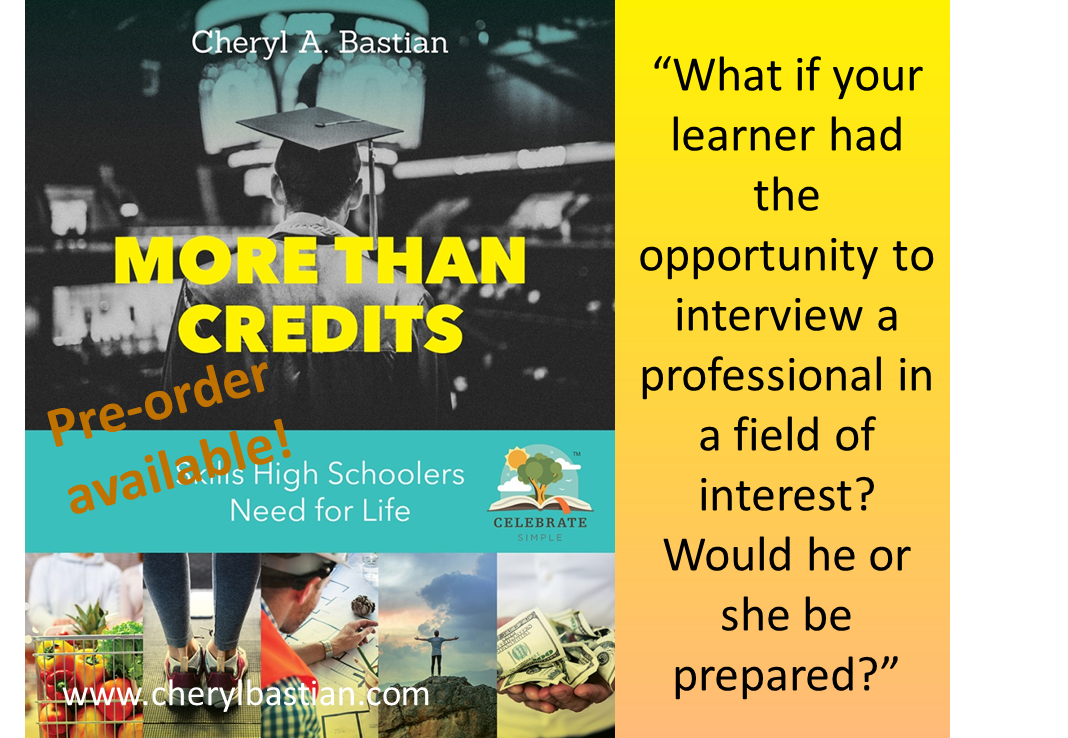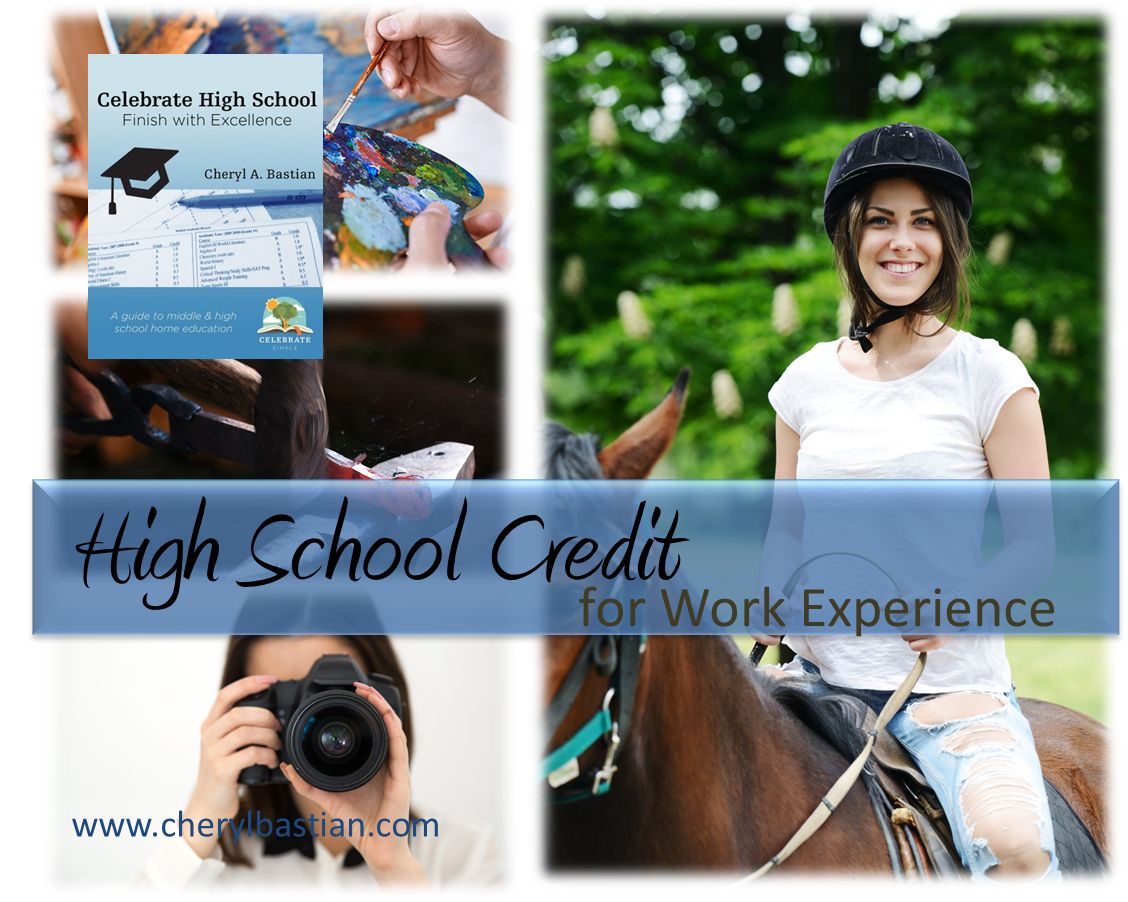When we open our eyes and hearts to other possibilities--alternative, but no less significantly successful high school journeys and culminating celebrations--young adults have innumerable opportunities which may be better suited to their strengths and giftings.
Acceptance letters are not the sole means of successful transition to a young adult's future.
Just as there are many potential pathways to successfully completing high school--the end result of helping a young adult develop his or her divinely-created strengths and giftings--there are also many different avenues to the young adult's future; the years beyond the turning of the tassel.
The Scholar. Scholars are not just learners; they are specialists--continually seeking to dig deeper in a specific area of interest. There is an aptitude for learning and time is made for accelerated or advanced degrees. In addition to researching and fulfilling the college entrance requirements for the young adult's top university choices, honors courses, dual enrollment, CLEP/DANTE/AP testing, and discussions or networking with professionals in the field of interests may also be helpful.
The Entrepreneur. Ideas. Strategy. Product analysis. These young adults grew up dreaming of starting a business and in fact may have started one or several during the middle or high school years. Young entrepreneurs may benefit from connecting with successful entrepreneurs as well as with other entrepreneurial-minded peers. In addition, these young adults may spend time at the library or online reading current issues of business magazines-- Inc., Entrepreneur, or Fast Company--or reading small business blogs. Consider looking for local opportunities where the entrepreneur might be able to attend small business seminars or entrepreneurial events. Job shadowing a business owner or two might be another consideration as well as offering time in the day for the young adult to research successful business practices, managerial/leadership qualities, and marketing or growth strategies. Some high school learners find having a mentor helpful. Having had two entrepreneurial/business-minded young adults, these were helpful resources for our learners. Entrepreneurs may or may not decide to pursue post-secondary education.
The Athlete. Most little leaguers dream of the big leagues--the pinnacle of achievement for athletes. In fact, we've known athletes who played through elementary and travel sports to high school athletics hoping to fulfill this dream. Some athletes indeed did move on to more competitive collegiate play. Others decided to hang up the cleats after their senior year. For young adults who desire to pursue sports after high school graduation, special attention to the new NCAA requirements is a must. Though an athlete may choose a college outside the NCAA, staying up-to-date is wise. Plans change, sometimes last minute and eligibility is dependent on completion of specific courses. Having had three athletes, we never wanted to short change a student-athlete. In fact, all three took different paths; none ended up playing collegiate sports. In addition to action on the field, we have known learners who read autobiogrpaphies and biographies of athletes they admire for high school credit. Possibilities include A Life Well-Played (Arnold Palmer), Through My Eyes (Tim Tebow), Out of the Blue (Orel Hershiser). One of our athletes enjoyed Between the Lines: Nine Principles to Live By and The Mental Game of Baseball.
The Creative. Creatives see the world differently--in words, colors, graphics, texture, line, or shapes. These young adults think outside the box and craft from incredible minds. Hence, their paths through high school might include preparing a portfolio, building a client list, visiting studios and exhibitions, experimenting with media, shooting thirds for a photographer, writing copy for publication, working at a hobby shop, creating art for a gallery, volunteering time to create graphics for church media or publication, or selling stock photography. All of these experiences may become part of their high school course work, and the contacts them make along the journey may provide avenues for employment after graduation. The Creative may decide to attend an art or music school, open a studio, spend time with a master artisan, or start a business. Many of these experiences make great activities for elective credits. Post-secondary educational experience may or may not be part of the Creative's future.
The Apprentice. Apprenticeships offer hands-on, experiential options to young adults who need to learn from masters or professionals in a field of interest. Though apprenticeships are not as popular as they were years ago, apprenticeships offer on-the-job training--and often some classroom instruction--for young adults interested in highly skilled work in healthcare professions, engineering, manufacturing, culinary arts, telecommunications, trades (welding, electrical, carpentry, plumbing), and service careers. The apprentice may train under a skilled craftsman, trained healthcare worker, or licensed professional to learn essential skills important to a particular job. Time devoted to apprenticing can vary to up to four years. Some apprenticeships may require certain math and science high school course work or required scores on HSPE (High School Proficiency Exams).
The Intern. Internships are an excellent means by which young adults can investigate career fields of interest and learn new skills. Internships can be formal or informal, part-time or full time, paid or unpaid, but are generally offered by an employer or institution for a specific amount of time. Most are considered entry level. Although university internships were traditionally offered to undergrad or grad students, there are colleges who open internships to high school students. Research the availability at local universities, as this is a growing trend. For a hands-on, experiential learner, an internship might be an excellent next step. If interning seems like a good fit for your young adult, consider the points made in this US News and World Report article.
There is great possibility several paths and means will overlap. For example, the Creative may also be the Intern, learning alongside or assisting a concert musician, graphic artist, or professional photographer. And, the Intern may also be the Scholar, gaining cutting-edge skill in a science or engineering field.
Remember, these are not the only possibilities for today's young adults. Just as all young adults are unique, so will be their high school paths and future plans. Not every high schooler will follow the same learning route, nor will they have the same next right steps. With a changing economy, growing knowledge base, and evolving ability for satellite employment, there are ever-growing career opportunities.
I wonder what those will be for our young adults?
This blog post is intended to offer an example of personal experience. It is in no way intended to be legal advice and should not be taken as such. Parents own the sole responsibility for the training and education of their children.





















